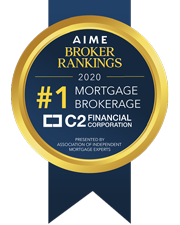Why Portfolio Loans are Important

Portfolio Loan Explained
Decades ago, mortgage loans were literally withdrawn from a bank’s vault and loaned to a home buyer. The buyers would sign a promissory note to the bank and the bank would attach a lien on the property to ensure repayment. At some point though, the bank could run out of money to lend. If you recall the movie It’s a Wonderful Life, you remember that scene where there was a bank run at the Bailey Brothers Savings and Loan? Customers demanded all the money in their savings account but because the bank used the funds to help others buy a home, there wasn’t enough available cash to cover all the requests. Today, due to required reserve requirements, a bank run like this won’t happen.
How it Works
Now let’s return to the secondary markets. As long as a mortgage lender approves a loan using pre-specified approval guidelines, the loan can be sold. Selling the loan replenishes the lender’s credit line allowing it to continue to be a mortgage lender. But with a portfolio loan, there is no such secondary market. It’s called a portfolio loan because the lender keeps the loan internally, in its portfolio. Portfolio loans will typically have slightly higher rates compared to traditional mortgages and many times will be for a shorter term, such as three, five or seven years.
A portfolio loan can provide mortgage financing to an otherwise eligible borrower that for some reason can’t quite fit all the requirements for a conventional mortgage. For instance, an individual has been working as a carpenter for several years but last year decided to start his own carpentry business. The carpenter has excellent skills and lots of happy homeowners but cannot get approved for a conventional mortgage because conventional mortgages ask for a two-year history of self-employment. If the carpenter only has one year being self-employed, he has not met the two-year minimum. But a portfolio loan may.
In this example, a portfolio loan might approve someone that has only been self-employed for one year, not two. There may be some other requirements such as a higher credit score, more down payment and cash reserves. With a portfolio loan, the carpenter can buy his house with just one year of self-employment with a goal of reaching the two-year milestone and refinancing out of a portfolio loan into a traditional mortgage down the road. I think you can see where a portfolio loan fits in the housing industry and helps support the real estate industry overall.
Takeaway
Not every mortgage company offers portfolio loans. As a mortgage broker, I have access to not only traditional mortgages such as those using Fannie Mae or Freddie Mac guidelines as well as government-backed mortgages underwritten to VA, FHA and USDA guidelines. But I also have access to several portfolio products that can approve a perfectly good file that for whatever reason can’t be approved as a traditional mortgage.
A portfolio loan can be both a short term as well as a long term solution. Portfolio loans can be offered as both fixed rate and adjustable rate mortgages. Unfortunately, when someone gets turned down for a traditional loan that person may not know about the portfolio landscape. A portfolio loan can approve someone that might otherwise have to wait to buy with competitive rates and terms.


